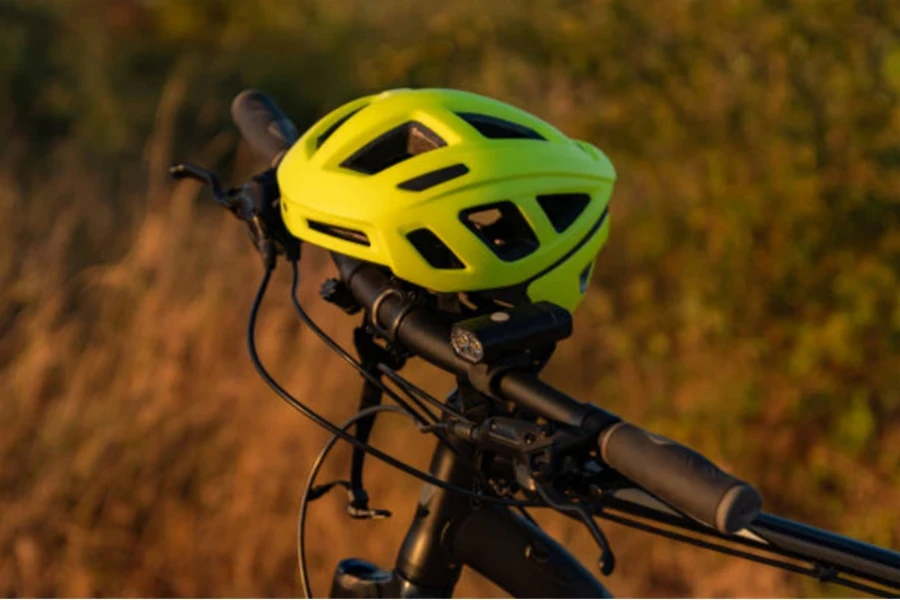In 2024, the helmet landscape presents a dynamic and ever-evolving arena, where innovation and consumer needs intersect in fascinating ways. Helmets, more than mere protective gear, have transformed into sophisticated products combining safety, comfort, and technology. This evolution mirrors the growing demands and expectations of end-users, who seek helmets that not only safeguard their well-being but also enhance their riding experience. As these products evolve, they open new avenues for differentiation and specialization, catering to a diverse range of needs from casual commuting to professional cycling. This landscape offers a rich tapestry of opportunities for those adept at discerning and meeting these varied demands, setting the stage for a nuanced understanding of what today’s helmets can offer and how they can serve their users beyond the basic premise of protection.
Table of Contents
1. Decoding the helmet market: 2024 edition
2. The art of helmet selection: what matters most
3. Spotlight on 2024’s helmet innovators and trailblazers
4. Final takeaways
1. Decoding the helmet market: 2024 edition

As 2024 unfolds, the helmet industry is witnessing a remarkable transformation, driven by innovative design and technology. This evolution is not just a leap in functionality but also a response to the nuanced demands of today’s consumers.
The future is now: breakthroughs in helmet design and tech
The global helmet market, as of 2022, was estimated to be valued at approximately US$ 24.7 billion. Looking ahead, this market is anticipated to register a steady compound annual growth rate (CAGR) of 5.6% from 2023 to 2031. By the end of this forecast period, in 2031, the market is expected to reach a valuation of around US$ 42.6 billion. This significant growth is attributed to various factors, including the rising incidence of road accidents globally and the increasing popularity of risk-taking sports such as biking. Additionally, the demand for helmets is being driven by stringent safety regulations in several countries, mandating their use for certain activities. This regulatory environment is not only boosting helmet manufacturing but also elevating safety standards across the industry.
The current trends in helmet technology are not just about safety; they’re about integrating cutting-edge advancements that redefine the user experience. For instance, the integration of MIPS (Multi-directional Impact Protection System) in helmets is a significant leap forward. This technology, designed to reduce rotational forces during an impact, represents a new standard in helmet safety. Moreover, the focus on lightweight materials and improved ventilation systems is transforming helmets into more comfortable and user-friendly accessories, without compromising on safety.
The pulse of the market: shifting consumer desires

The market’s expansion is also driven by diversifying consumer preferences. Today’s consumers are looking for helmets that cater to specific needs, whether for commuting, recreation, or sport. This has led to a surge in specialized helmets, such as those designed for mountain biking or road cycling, each with unique features tailored to the activity. The demand for helmets that combine aesthetics with functionality is also on the rise, reflecting a shift in consumer attitudes where style is as important as safety.
This dynamic market landscape is characterized by several key players, including ABUS, Trek Bicycle, Specialized, and others, who are continually innovating to meet these evolving needs. Their strategies often involve a blend of technological advancements and understanding of consumer preferences, setting the stage for a competitive and vibrant market.
The helmet market in 2024 is at an exciting juncture, marked by technological innovation, changing consumer demands, and a competitive landscape. This environment presents unique opportunities for those who understand these trends and are ready to adapt to the evolving needs of the market.
2. The art of helmet selection: what matters most

Safety first: navigating standards and certifications
In the realm of helmet selection, the paramount concern is invariably safety. The landscape of safety standards and certifications is intricate, yet it forms the backbone of helmet manufacturing and selection. Helmets must adhere to rigorous safety standards, such as those set by the Consumer Product Safety Commission (CPSC) in the United States or the European EN 1078. These certifications ensure that helmets can withstand specific impact forces, offering maximum protection in the event of a collision or fall. The importance of these standards cannot be overstated, as they are the primary indicators of a helmet’s ability to safeguard its wearer.
The intricacies of helmet safety extend significantly beyond mere compliance with established standards. Advanced features like the Multi-directional Impact Protection System (MIPS) offer a sophisticated layer of safety, crucial for reducing rotational forces on the brain, a key factor in preventing severe brain injuries. MIPS technology, developed in Sweden, is designed to mitigate the risk of rotational damage. This system functions by allowing a slight movement between the head and the helmet, providing 10-15 millimeters of slip in the event of an impact. This movement is akin to the natural ‘sliding’ effect provided by the cerebrospinal fluid between the brain and skull, offering protection against twisting forces.

MIPS technology has been integrated into various helmet designs, including motorcycle, industrial, equestrian, and bicycle helmets. In 2020 alone, there were 729 helmet designs using MIPS technology, with over 20 million units sold. This widespread adoption underscores the industry’s commitment to evolving safety standards and the recognition of MIPS as a significant advancement in helmet safety. The addition of MIPS technology typically increases a helmet’s price by about $50, a reasonable cost for the enhanced safety it provides. This integration of MIPS into helmet design is a testament to the industry’s dedication to advancing safety standards and protecting users from complex brain injuries.
The comfort equation: ensuring a perfect fit

Parallel to safety is the crucial aspect of comfort and fit. A helmet’s effectiveness is significantly compromised if it does not fit the wearer correctly. The ideal helmet should offer a snug, yet comfortable fit, allowing for extended wear without discomfort. This is where aspects like adjustable straps, padding, and ventilation come into play. A well-ventilated helmet, for instance, enhances comfort, especially in warmer climates or during strenuous activities. The sources highlight the importance of these features, noting that comfort often dictates user preference and, by extension, market trends.
The diversity in helmet designs is crucial for catering to various head shapes and sizes, ensuring a perfect fit for every individual. This customization is not just about physical comfort; it also plays a crucial role in ensuring the helmet’s safety features function as intended. According to the National Highway Traffic Safety Administration (NHTSA), helmets come in different shape styles – round oval, intermediate oval (the most common), and long oval. It’s important to determine the actual shape of one’s head before buying a helmet, as a mismatch can lead to discomfort and safety risks.
When measuring for size, the use of a cloth tape measure is recommended, starting just above the eyebrows and circling around the thickest point at the rear of the head. A correctly sized helmet should provide even pressure around the head without uncomfortable pressure points and should not move when the head is shaken. This precise fit is essential as a helmet that is too loose can move around, and one that is too tight can create pressure points, both scenarios compromising the helmet’s protective capabilities.
3. Spotlight on 2024’s helmet innovators and trailblazers

The 2024 helmet market showcases a remarkable array of innovations and trailblazing designs, each tailored to specific riding styles and safety requirements. Here’s a detailed exploration of some of the standout helmet models of the year:
The cream of the crop: 2024’s top helmet picks
X-Treme Vision Pro: This helmet is a marvel of modern engineering, integrating MIPS technology for advanced rotational impact protection. Its ventilation system is state-of-the-art, providing optimal airflow while maintaining structural integrity. The helmet’s sleek design and lightweight construction make it a top choice for professional cyclists.
AeroSwift Race: Known for its aerodynamic profile, the AeroSwift Race is a masterpiece of design efficiency. It’s incredibly lightweight, reducing drag and enhancing speed, making it ideal for competitive racing. Its streamlined shape not only improves performance but also offers a modern aesthetic appeal.
UrbanSafe Commuter: Designed with the urban cyclist in mind, this helmet prioritizes visibility and functionality. It features integrated LED lights for increased visibility in city environments and a robust design to withstand varied urban conditions. Its weather-resistant properties make it a reliable choice for daily commuters.
Feature face-off: comparing the best of the best

Safety Features: The X-Treme Vision Pro’s MIPS technology sets a high bar for safety, significantly reducing the risk of brain injuries in accidents. The AeroSwift Race, while not equipped with MIPS, focuses on a secure fit to ensure safety at high speeds. The UrbanSafe Commuter, though less focused on high-impact protection, offers excellent visibility features for safer urban riding.
Comfort and Fit: All three models excel in providing comfort. The X-Treme Vision Pro and AeroSwift Race offer adjustable fitting systems for a snug, personalized fit. The UrbanSafe Commuter, with its additional padding, ensures comfort during longer commutes.
Special Features: The AeroSwift Race’s aerodynamic design is a standout feature for racers, while the X-Treme Vision Pro’s ventilation system is top-notch for long rides. The UrbanSafe Commuter’s LED lights are a unique feature, enhancing safety in low-light conditions.
Specialized segments: tailored helmets for unique demands

TrailBlazer MTB: This helmet is designed specifically for mountain biking enthusiasts. It features enhanced lateral impact protection and an integrated camera mount, making it perfect for adventurous trail riding.
EcoRide: Catering to the environmentally conscious rider, the EcoRide is made from sustainable materials. Its carbon-neutral manufacturing process is a significant step towards eco-friendly cycling gear.
The 2024 helmet market is characterized by a diverse range of innovative products, each designed to meet specific needs and preferences. From high-speed racing to urban commuting and eco-friendly options, the helmet industry continues to evolve, offering advanced safety features, comfort, and specialized designs to cater to a wide array of cyclists.
4. Final takeaways
The 2024 helmet market presents a dynamic landscape, rich with opportunities for online retailers. Success hinges on understanding the diverse needs of cyclists, from safety innovations like MIPS technology to specialized designs for urban commuting and mountain biking. Staying abreast of these trends and tailoring inventory to include a range of helmets that cater to different preferences and requirements is key. Retailers who adeptly navigate this varied terrain, offering products that blend safety, comfort, and specific functionalities, are well-positioned to thrive in this evolving market.




